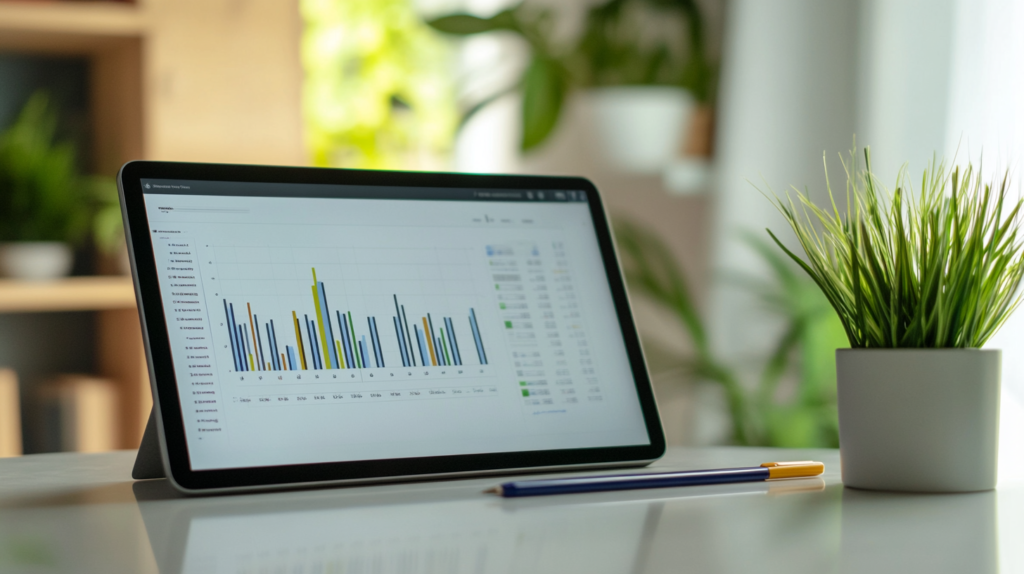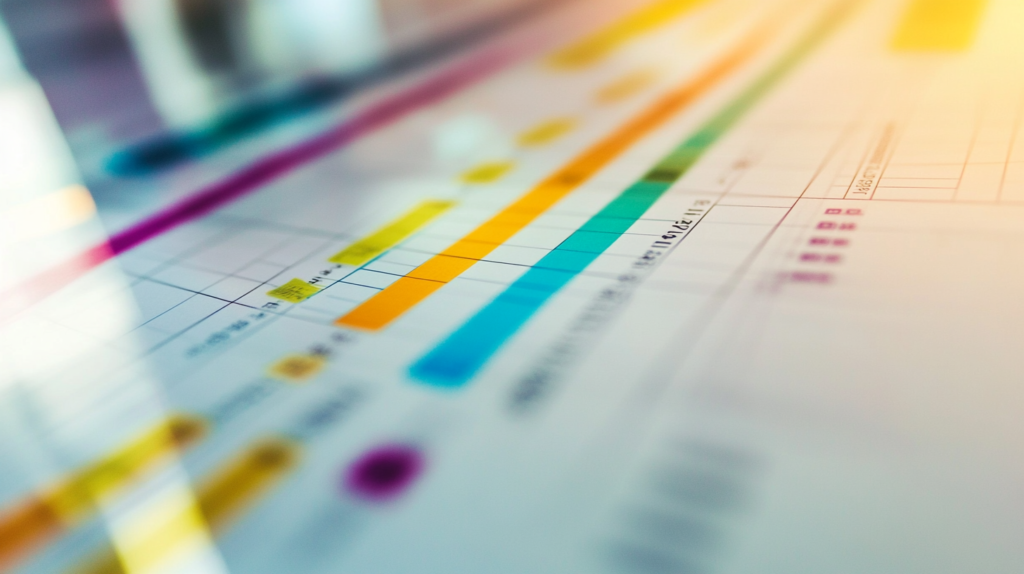Gantt Charts for Seamless Project Management

Gantt charts have emerged as an indispensable tool for project managers worldwide, offering a structured and visual approach to managing complex tasks. From small startups to multinational corporations, charts empower teams to streamline workflows, track milestones, and deliver projects on time.
Table of Contents
- What Are Gantt Charts?
- The History and Evolution of Gantt Charts
- How Gantt Charts Improve Project Timelines
- Key Features of Modern Gantt Charts
- Best Practices for Creating Effective Gantt Charts
- Benefits of Gantt Charts for Teams
- Common Mistakes to Avoid When Using Gantt Charts
- How Deskcove Makes Gantt Charts Smarter
What Are Gantt Charts?
Gantt charts are horizontal bar charts used to visualize project timelines. They provide a graphical representation of tasks, deadlines, and dependencies, making them an essential planning tool. By breaking down projects into manageable segments, teams can monitor progress and ensure smooth workflow execution.
These charts excel in timeline planning and project breakdown, particularly when used in conjunction with tools like work breakdown structures (WBS). Whether you’re managing a marketing campaign or constructing a skyscraper, charts simplify the process by illustrating complex timelines in an accessible format.
The History and Evolution of Gantt Charts
The concept of Gantt charts dates back to the early 20th century when Henry L. Gantt, an American mechanical engineer, introduced them to improve efficiency in production lines. Originally drawn by hand, these charts were simple but effective.
Fast forward to today, and modern charts are powered by advanced project scheduling tools. They integrate seamlessly with digital platforms, enabling real-time updates, resource allocation, and baseline comparisons. This evolution has made charts an indispensable tool in the era of digital project management.
How Gantt Charts Improve Project Timelines
Gantt charts enhance project timelines by providing clarity, structure, and a visual roadmap for task execution.
The Role of Task Dependencies
Task dependencies are critical to project success. A chart highlights these relationships, ensuring that sequential tasks are completed in the correct order. For instance, in software development, coding must precede testing. By visualizing dependencies, teams can avoid bottlenecks and delays.
Visualizing Project Milestones
Milestones serve as key checkpoints in a project timeline. Gantt charts make milestone tracking intuitive, allowing managers to identify critical dates at a glance. This is particularly useful for long-term projects that involve multiple stakeholders and deliverables.
Managing Project Duration Estimates
Accurate duration estimates are vital for effective planning. Gantt charts help teams allocate time realistically, balancing workload and deadlines. By doing so, they reduce the risk of missed deadlines and overworked teams.
Key Features of Modern Gantt Charts
Modern Gantt charts include a range of features that make them versatile and user-friendly.
Interactive and Customizable Views
Modern Gantt charts are highly interactive, allowing users to customize task views and timelines. Tools like drag-and-drop scheduling make adjustments seamless, while color-coded bars enhance clarity.
Resource Allocation and Task Assignment
Resource allocation is another powerful feature. With charts, managers can assign tasks based on team availability, ensuring optimal workload distribution. This promotes efficiency and prevents burnout.
Baseline Comparisons for Progress Updates
Baseline comparisons enable teams to measure progress against initial plans. This feature is essential for identifying deviations and implementing corrective actions promptly.
Best Practices for Creating Effective Gantt Charts
Adopting best practices ensures that your Gantt charts remain effective and practical.
Defining Clear Objectives
Every successful chart begins with clear objectives. Define the scope, key deliverables, and deadlines to create a roadmap that guides your team.
Incorporating Workflow Visualization
Workflow visualization helps teams understand how tasks interconnect. By highlighting dependencies and parallel activities, charts foster better coordination and productivity.
Regular Project Monitoring
Monitoring progress is crucial for staying on track. Regularly update your chart to reflect completed tasks, adjust schedules, and address any emerging challenges.
Benefits of Gantt Charts for Teams
Gantt charts offer numerous benefits that make them indispensable for team projects.
Enhanced Collaboration
Gantt charts facilitate collaboration by providing a centralized view of the project timeline. Teams can communicate more effectively, share updates, and align their efforts toward common goals.
Critical Path Analysis
Critical path analysis identifies the sequence of tasks that determines project duration. By focusing on this path, managers can allocate resources strategically and ensure timely completion.
Efficient Deadline Management
Deadline management becomes more straightforward with charts. Teams can visualize overlapping deadlines and adjust priorities to avoid conflicts.
Common Mistakes to Avoid When Using Gantt Charts
To maximize the effectiveness of Gantt charts, avoid these common pitfalls.
Overloading the Chart
Including too many details can make a chart overwhelming. Focus on high-level tasks and milestones to maintain clarity.
Ignoring Dependencies
Overlooking task dependencies can lead to scheduling conflicts. Always map out relationships between tasks to ensure smooth execution.
Skipping Regular Updates
A static chart loses its value quickly. Regular updates are essential for reflecting progress and adapting to changes.
How Deskcove Makes Gantt Charts Smarter
Deskcove offers an innovative suite of project management tools, including advanced chart capabilities. With features like real-time updates, drag-and-drop task management, and resource allocation, Deskcove simplifies complex projects. Its user-friendly interface and powerful analytics ensure that your team stays on track and achieves its goals.
FAQ Section
What is a Gantt chart used for?
A chart is used for planning, scheduling, and tracking project timelines. It helps visualize tasks, dependencies, and milestones in a structured format.
Can Gantt charts handle complex projects?
Yes, modern charts are designed to manage complex projects. They include features like task dependencies, resource allocation, and critical path analysis.
How does Deskcove enhance Gantt chart functionality?
Deskcove’s tools offer real-time updates, intuitive design, and advanced analytics to streamline project management and improve team productivity.


